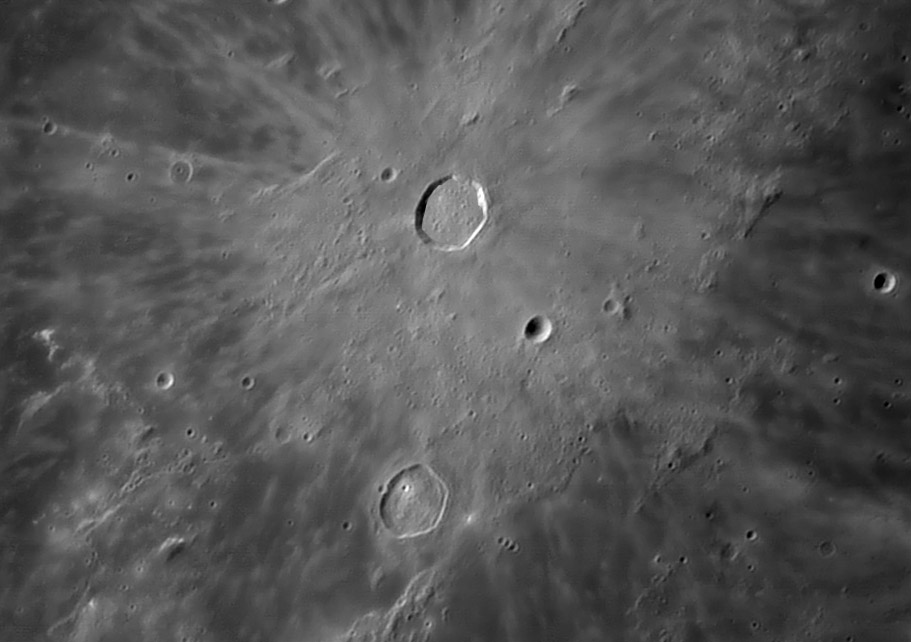July 25, 2008
Extreme Makeover

image by Pavel Presnyakov, Kiev, Ukraine
These two craters on the eastern edge of Oceanus Procellarum are about the same size (32 and 29 km) and have similar angular rim shapes and lumpy interiors. There are a number of similar lunar craters, so many so that back in the early 1970s when I was cataloging craters, I classified them as "Gambart" type craters. The defining characteristics are the slightly angular rims and shallow floors. The majority of Gambart type craters occur in the area south of Imbrium, suggesting that perhaps some regional stress in the crust angularized the rims when the impacts occurred that formed the craters. But an odd stress field shouldn't cause the craters to be shallow and the floors to be slightly lumpy. Is it possible that Gambart type craters are volcanic calderas - certainly a lot of volcanic domes occur in the area?
Chuck Wood
Technical Details
26.06.2008 01:40 UT. TAL-250K 1/25 + Vac-135, b/w 1280x1024 + Baader IR-pass filter; 500 frames from 2500 in Registax4
The correct response to the question at the end of the LPOD text above is: Not likely. I have pasted a new floor ((cut from a hilly area between Kepler and Encke) in Kepler to show how much the crater's rim and shape look like those of Gambart type craters. But unlike them, Kepler is deeper with a central peak (see pre-modified image below), a floor more typical of a fresh impact craters. Could Kepler be transformed into the Photoshopped look I gave it with adequate erosion and shaking over a few billion years? I am not sure...
Related Links
Rükl plate 30
Pavel's gallery
Yesterday's LPOD: Deviant Tracks
Tomorrow's LPOD: What Technology is For
COMMENTS?
Register, Log in, and join in the comments.



